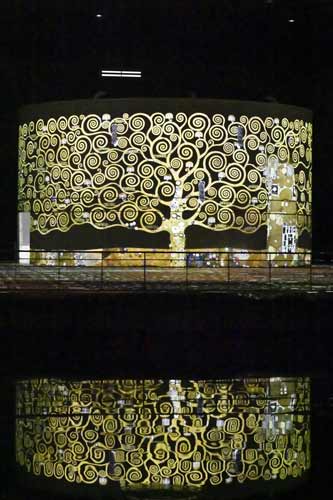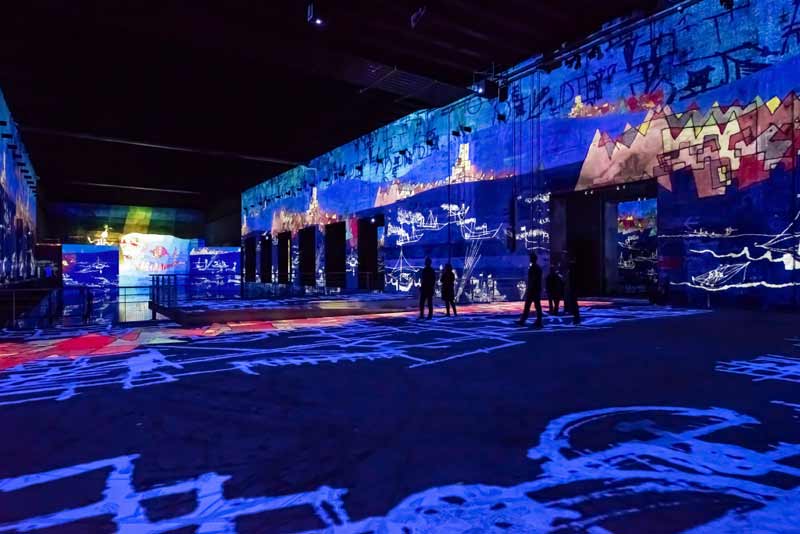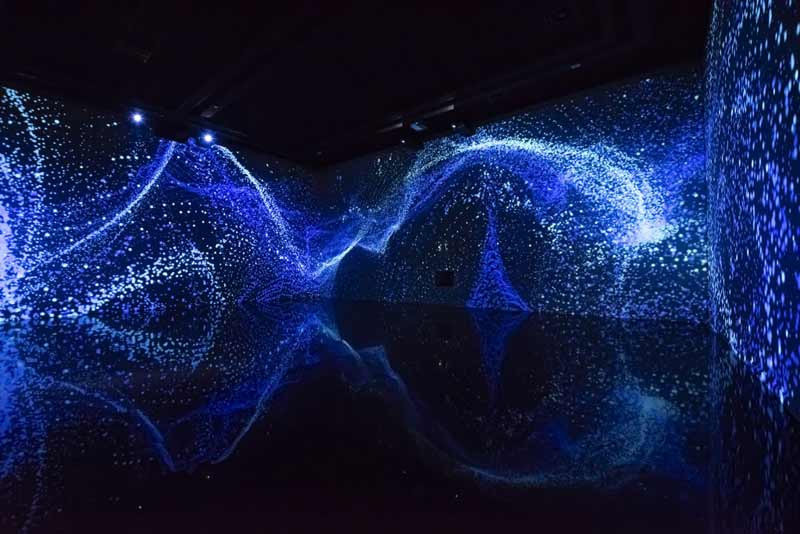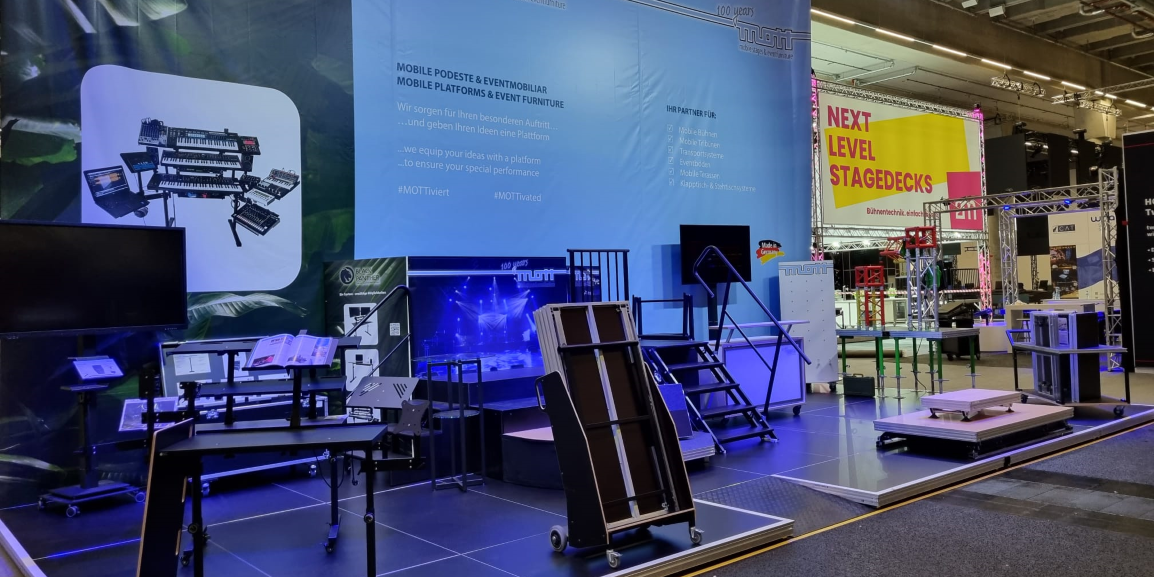Until January, an extravagant exhibition will be held in Bordeaux, France, in a unique location. In a former submarine base, Culturespaceshas opened the largest digital art centre in the world: the Bassins de Lumières. Four monumental immersive digital exhibitions dedicated to the most important artists of art history and contemporary art are currently presented here.
The location: a former submarine base

Gustav Klimt: „Gold und Farbe“
The area of the former submarine base is 4,110 meters long and 22 meters wide. It contains twelve meter deep basins with a total area of 13,000 m² and thus a projection area of cicra 12,000 m².
The digital exhibitions are perfectly adapted to the monumental architecture of the submarine base. For example, they are reflected in the water of the four huge basins, adding a new dimension to the experience of immersion. Visitors are guided on catwalks above the water and along the huge basins.
After the creation of Atelier des Lumières, we are delighted to have created this huge digital art centre for the city of Bordeaux. The Bassins de Lumières will offer visitors unforgettable visual and acoustic experiences in a unique setting, a place for cultural exchange open to all types of visitors. Bruno Monnier, President of Culturespaces
Bruno Monnier, Präsident von Culturespaces
Culturespaces is France’s leading private operator in the field of management and promotion of monuments, museums and art centres and is pursuing the creation of digital art centres and immersive exhibitions.
Immersive digital exhibitions

Paul Klee: “Painting Music”
Throughout the year, the Bassins de Lumières host exhibitions for lovers of traditional and contemporary art. Several events are presented simultaneously: A continuous cycle of immersive digital exhibitions is presented around the four huge pools. These alternate between a long exhibition dedicated to the most important artists of art history and a shorter exhibition presenting more contemporary works. Le Cube is a new eight-metre high area with a surface area of 220 m². This impressive area is dedicated mainly to contemporary artists specialising in immersive art.
In La Citerne, a new 7-metre high area of 155 m2, the links between the original works and their original museums are explored.
Gustav Klimt: “Gold and colour”
On the occasion of the reopening, the Bassins de Lumières will focus on a century of Viennese painting and take an original look at Gustav Klimt and his successors through portraits, landscapes, nudes, colours and gilding. Klimt led the Viennese Secession, a movement that sought to break away from academic art: he paved the way for modern painting. The gold and decorative motifs are a symbol of this artistic revolution. Visitors discover large-scale masterpieces such as the famous work “The Kiss” and immerse themselves in imperial Vienna at the end of the nineteenth century.
The work was created by Gianfranco Iannuzzi, Renato Gatto and Massimiliano Siccardi with the musical collaboration of Luca Longobardi.
Paul Klee: “Painting Music”
This immersive exhibition is dedicated to the colourful abstract works of the German artist Paul Klee and is regarded as a homage to Klee’s pictorial world. It takes the visitor from an opera overture in an imaginary city to an underwater concert amidst gold and colourful fish and the rhythm of his geometric structures. Dozens of corresponding portraits and marionettes, accompanied by Papageno’s singing, form the conclusion of the concert. The exhibition was created by Studio Cutback.
Dedicated to contemporary art: “Ocean Data”

KCreation Studios Ouchhh “Ocean Data””
In Le Cube, visitors can discover a new work by digital creation studio Ouchhh, which specialises in graphic design, motion design and digital projections. Ouchhh uses artificial intelligence to create images and questions the act of artistic creation.
“Ocean Data” is made up of millions of data collected in the sea to create an unique digital work in which shapes, light and movement are generated by an algorithm. Visitors are taken into the heart of the ocean and embark on a journey through different materials, colours and reliefs. The work combines art, science and technology into a contemplative experience.
Pictures: Culturespaces / Anaka Photographie





